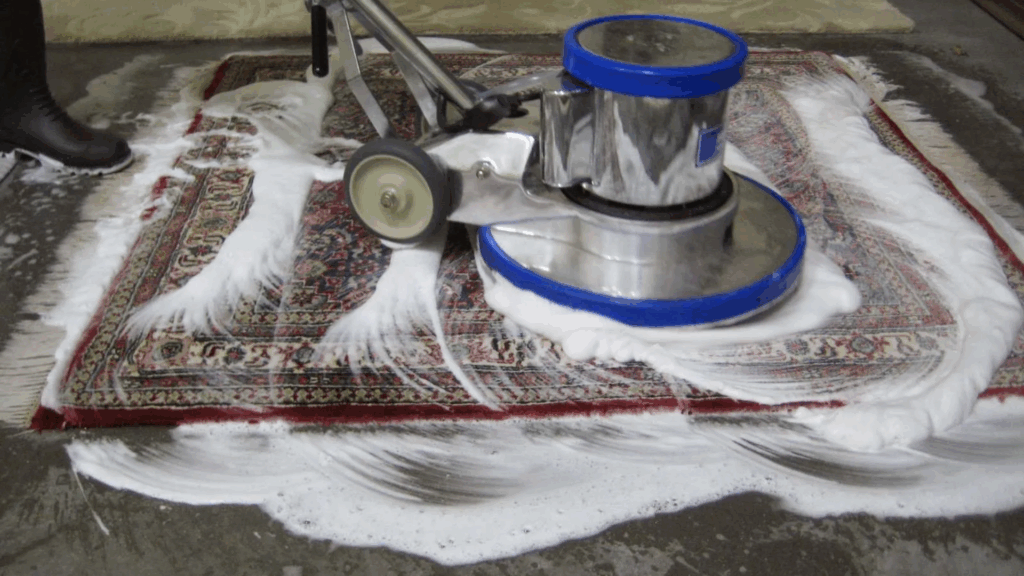Carpets do more than feel soft underfoot – they catch dust, dirt, allergens, and pet hair deep in the fibers.
Even when your carpet appears clean, it may still be harboring substances you can’t see.
That’s why shampooing matters. It gives your carpet a full clean and helps it stay in better shape for longer.
In this article, I’ll guide you through the frequency of carpet cleaning, the signs indicating that your carpet needs attention, and some simple ways to keep it fresh between cleanings.
You’re in the right spot if you’re looking for solid advice. Let’s get into it.
Why Carpet Shampooing Matters?
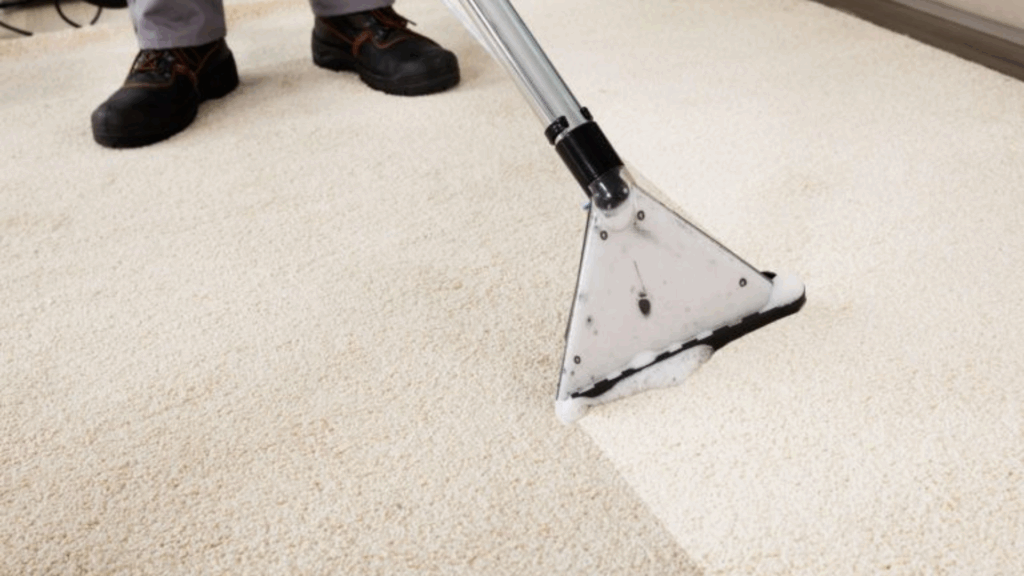
Shampooing your carpet isn’t just about looks – it’s about health, too.
It helps clear out dust mites, allergens, and tiny particles that can build up over time. This can make a big difference if someone in your home has allergies or asthma.
It also helps stop mold and germs from growing, which keeps your indoor air cleaner and safer to breathe.
Additionally, shampooing helps your carpet look and feel better. It brings back color that might have faded under layers of dirt.
It softens the fibers, making your carpet feel nicer underfoot. And when your carpet looks fresh, your whole home feels neater and more put-together.
How Often Should You Shampoo Your Carpet?
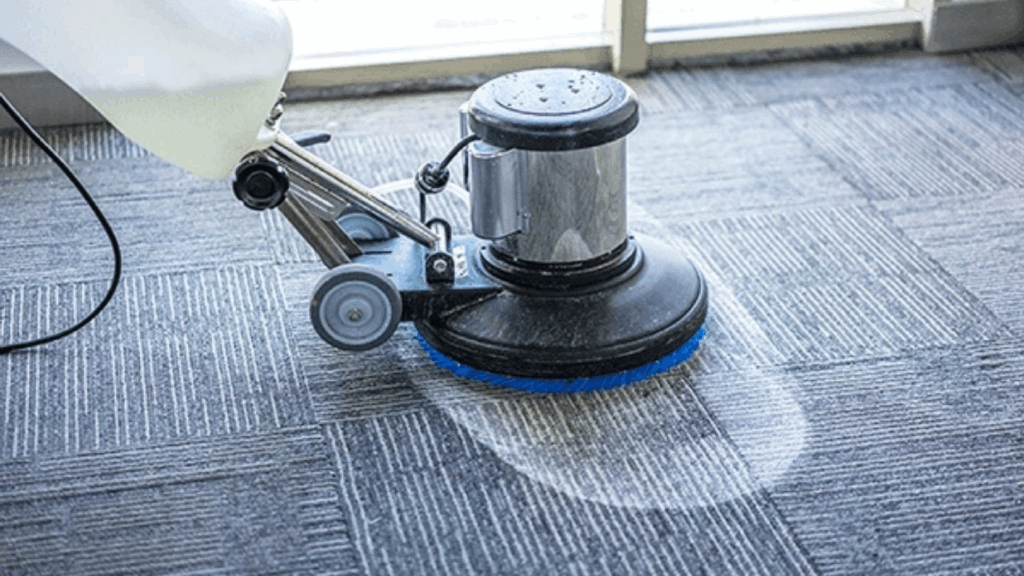
There’s no one-size-fits-all answer. How often you should shampoo your carpet depends on where it is, how much it gets used, and who lives in your home.
| Situation | Recommended Cleaning Frequency |
|---|---|
| General Tip | Once every 12 months |
| Busy Areas (hallways, stairs, living rooms) | Every 6–9 months |
| Less Used Spaces (bedrooms, guest rooms) | Every 12–18 months |
| If You Have Kids | Every 6 months or sooner |
| If You Have Pets | Every 3–6 months |
| If You Have Allergies | Every 3–4 months |
Some areas require more attention than others, such as busy walkways or homes with pets and children.
Signs It’s Time to Shampoo Your Carpet
Not sure if it’s time for a deep clean? Your carpet gives off clear signals when it needs extra care. These signs are easy to spot once you know what to look for.
- You see stains that don’t go away, even after spot cleaning
- The carpet has a bad or musty smell that sticks around
- Colors look faded or dull
- You notice more sneezing, coughing, or stuffy air indoors
Factors That Affect How Often You Should Clean
Not all carpets are the same. Some require more care based on their composition, where you live, or even the color of the material.
Type of Carpet
The material your carpet is made from affects how often it needs cleaning.
- Wool carpets tend to trap dirt and moisture, so they usually need more frequent care to stay fresh. They’re soft and warm but can hold on to dust and spills.
- Nylon carpets, on the other hand, are more durable and better at resisting stains, making them easier to maintain with less frequent deep cleaning.
Color
- Light-colored carpets show everything – from footprints to coffee spills. Even a small stain or bit of dust can stand out, so they often need cleaning more often to look their best.
- Dark carpets can hide dirt better, but that doesn’t mean they’re cleaner. You might not see the grime right away, but it’s still there, so regular cleaning is still important.
Climate
Where you live plays a big role in how often your carpet needs attention.
- In humid areas, carpets are more likely to trap moisture, which can lead to mold or musty smells if not cleaned regularly.
- In dry regions, dust builds up quickly and settles deep into the fibers.
No matter the climate, regular cleaning helps keep carpets in good shape and your indoor air fresher.
Shampooing vs. Other Carpet Cleaning Methods
Carpet cleaning isn’t one-size-fits-all. The method you choose depends on the level of dirtiness of your carpet, the speed at which you need it to dry, and the type of cleaning result you desire.
1. Shampooing
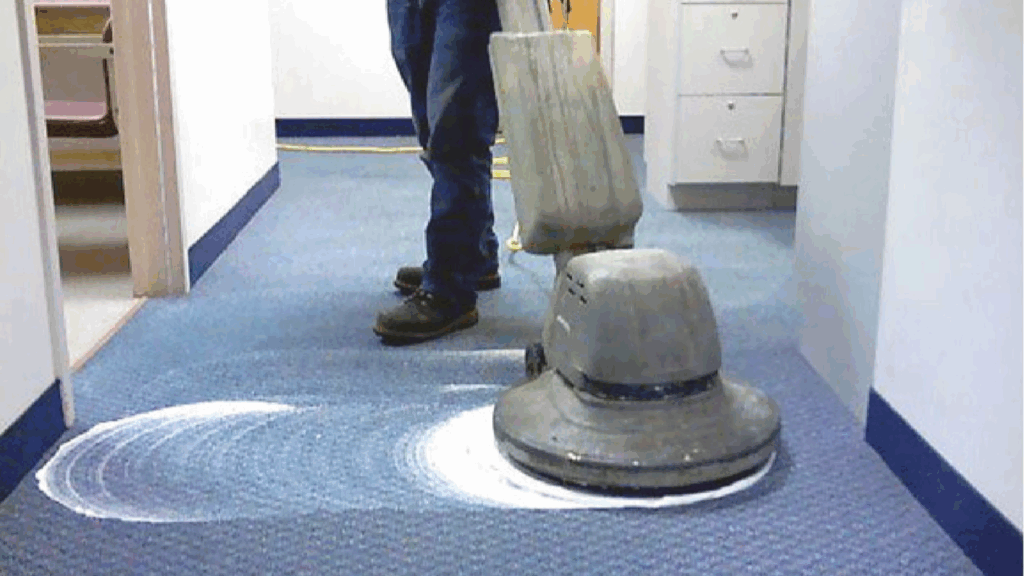
This method involves applying a foamy cleaning solution to the carpet with a special machine that scrubs it in. The goal is to loosen deep dirt, grime, and old stains stuck in the fibers.
It works well for carpets that haven’t been cleaned in a while or for homes with heavy foot traffic.
While shampooing can clean thoroughly, it may leave behind some residue if not rinsed out well.
2. Steam Cleaning
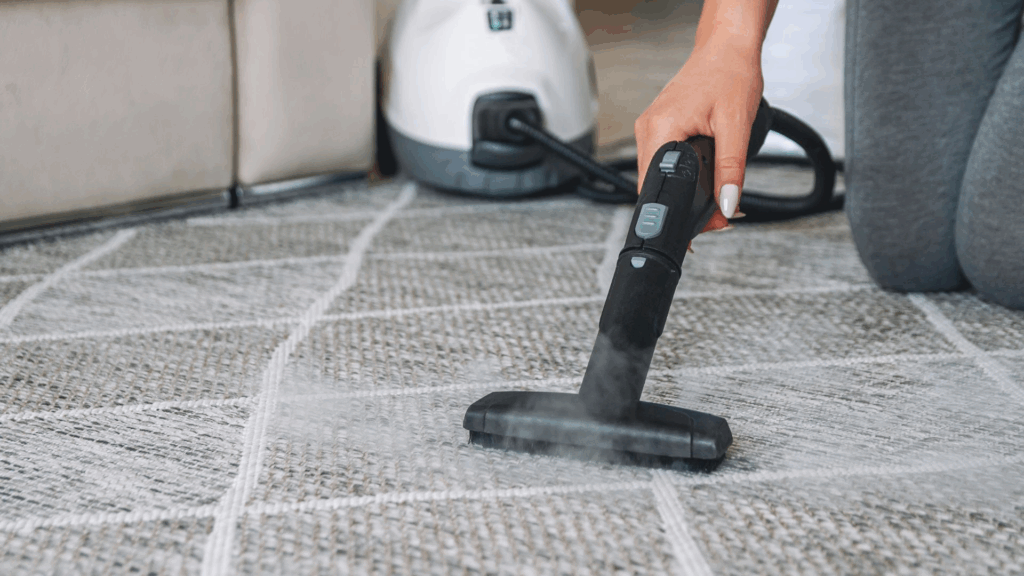
Steam cleaning, also known as hot water extraction, is a deeper cleaning method that uses very hot water injected into the carpet.
It’s highly effective in removing allergens, germs, and old buildup, making it a wise choice for individuals with allergies or those with pets.
However, drying takes time – usually from 6 to 24 hours – depending on the carpet’s thickness and airflow.
3. Dry Cleaning
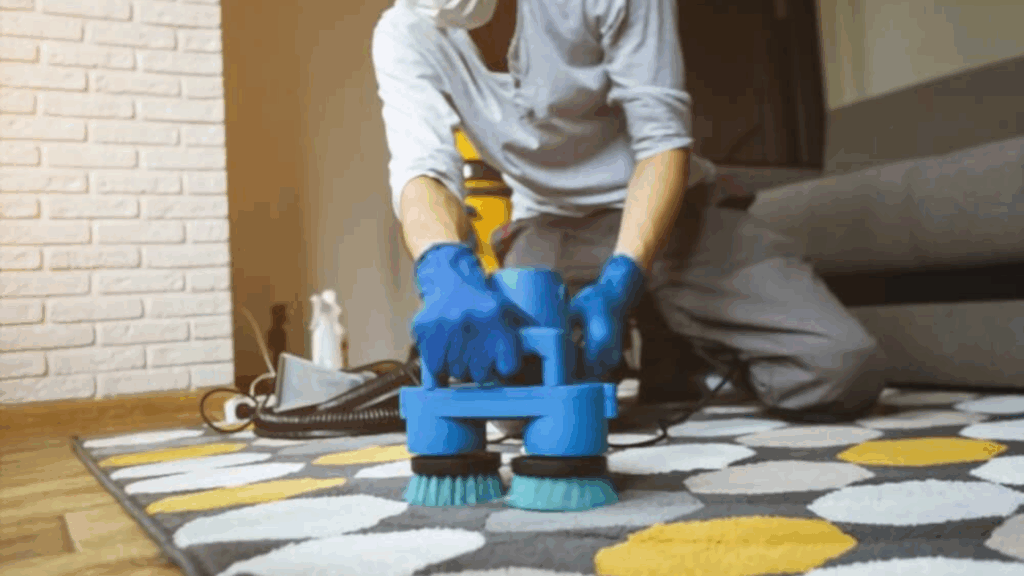
Dry carpet cleaning utilizes a special powder or low-moisture solution that is spread evenly across the carpet.
A machine then works the cleaner into the fibers, attracting dirt like a magnet. After a short time, the residue is vacuumed up.
This method is popular for its fast drying time, often under an hour. However, it’s not meant for heavy stains or deep-down dirt.
4. Foam Cleaning
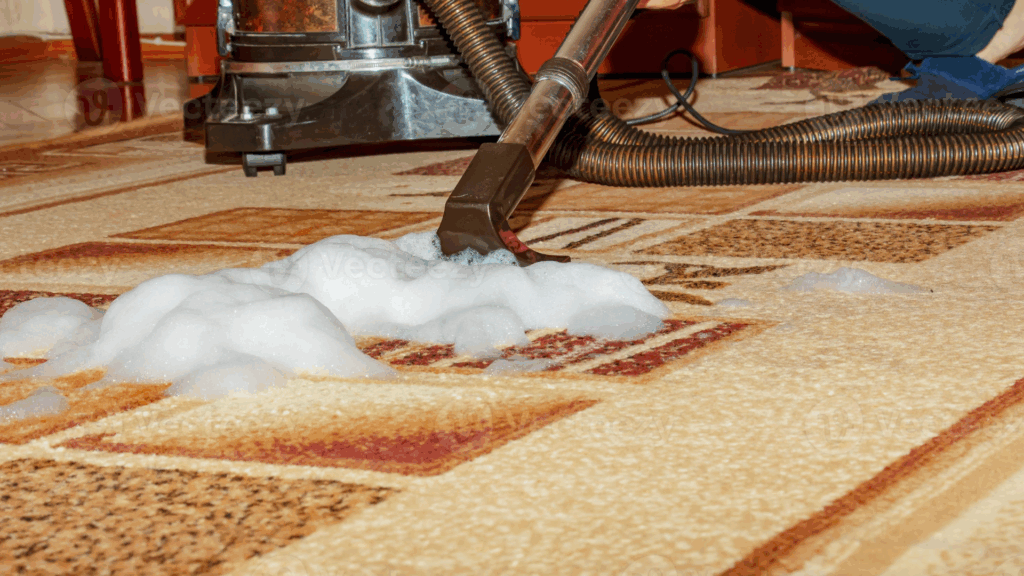
Foam cleaning is a mix of shampooing and dry cleaning. A layer of foam cleaner is applied and brushed into the carpet using a rotating machine.
It lifts dirt effectively while using less water. It also dries faster than steam cleaning or complete shampooing.
It is a suitable option for medium-duty cleaning, as it is more effective than dry cleaning, yet quicker and less messy than steam cleaning.
Comparing the Different Methods of Cleaning Carpets
| Method | How It Works | Best For | Dry Time | Pros | Cons |
|---|---|---|---|---|---|
| Shampooing | Foamy solution scrubbed into the carpet to loosen dirt | Heavy dirt, old stains, high-traffic areas | 6–12 hours (or more) | Deep cleans, good for neglected carpets | May leave residue if not rinsed well |
| Steam Cleaning | Hot water is injected into the carpet, then extracted with dirt | Allergies, pet homes, and deep cleaning | 6–24 hours | Removes allergens, bacteria, and deep buildup | Long drying time |
| Dry Cleaning | Powder or low-moisture cleaner brushed in and vacuumed | Quick touch-ups, offices, and light cleaning | Under 1 hour | Speedy drying, no water needed | Not for heavy stains or deep grime |
| Foam Cleaning | Foam applied and scrubbed with a machine | Medium-duty cleaning | 2–4 hours | Faster drying, more effective than dry cleaning | May not clean as deeply as steam |
DIY vs. Professional Carpet Cleaning: Which Is Better?

Keeping your carpet clean doesn’t always mean calling in the pros. Depending on your needs and budget, both DIY and professional cleaning have their benefits
DIY Carpet Shampooing
Pros:
- Saves money compared to hiring professionals
- Lets you clean on your own schedule
- Great for small areas or quick touch-ups
Cons:
- Risk of over-wetting the carpet, leading to long drying times
- Home machines may not clean as deeply as professional tools
- Can leave behind dirt or soap if not used correctly
Professional Carpet Cleaning
Pros:
- Provides a deeper clean using high-powered equipment
- Safer choice for delicate or high-end carpets
- Removes more allergens, bacteria, and deep-set stains
Cons:
- Higher cost than DIY cleaning
- Requires scheduling and waiting for service
- Less flexible if you need quick or last-minute cleaning
Both options can work well; it just depends on your specific needs. Choose what fits your budget, schedule, and how deep of a clean your carpet really needs.
Smart Tools to Keep Your Carpet Clean
You don’t have to spend hours keeping your carpet clean. A few innovative tools can make everyday upkeep much easier.
- Robot vacuums are great for daily cleaning – they quietly pick up dirt and dust while you go about your day. For spills, spot cleaners are quick and handy, helping you act fast before stains set in.
- Carpet sweepers are perfect for a quick refresh without needing power or setup. For low-pile carpets, steam mops provide a gentle clean that’s fast and effective.
These tools can save you time, energy, and effort while maintaining the good condition of your carpet.
How to Maintain Your Carpet Between Shampoos?
Shampooing isn’t the only way to maintain your carpet’s good condition. What you do in between cleanings can make a big difference.
- Keep Dirt Under Control: Vacuuming once or twice a week helps stop dust and dirt from sinking deep into the carpet. Placing doormats at all entrances prevents dirt from outside from entering the house.
- Act Fast on Spills: Don’t wait when something spills. The sooner you clean it up, the less likely it is to stain or cause smells. Gently blot the area, use a mild cleaner if necessary, and dry the spot thoroughly.
- Protect and Refresh: Furniture that remains in one spot for too long can leave marks or cause the carpet to wear unevenly. Move things around occasionally, even if just a little, to help your carpet wear more evenly.
Conclusion
Carpet care doesn’t have to be confusing. Instead of guessing, think about your space, who lives in it, and how much traffic your carpet sees.
Homes with children, pets, or individuals with allergies will require more frequent cleanings.
But no matter your setup, the basics remain the same: vacuum regularly, clean up spills immediately, and shampoo when the signs appear.
You don’t need fancy gear – just the proper habits and tools that fit your needs.
If you choose to shampoo it yourself or hire a pro, the goal is the same: a clean, soft, and healthy carpet under your feet.
By paying attention to what your carpet is telling you, you can make wise choices without stress. Stay consistent, and your carpet will stay fresh and last longer.

